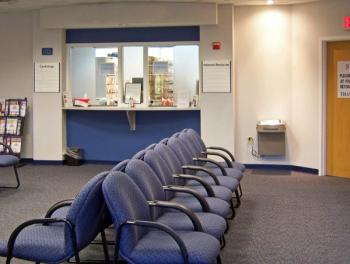
Do high deductibles mean high risk for physicians?
‘High deductible’ patients provide an opportunity for practices to modernize payment policies.
As millions more people join the healthcare system in the next few years, the burden to collect money will fall more heavily on the small and solo practitioner-especially as patients are also shouldering more of their own healthcare costs with high deducible insurance plans.
An estimated 20 million new patients will join the healthcare system by the end of 2014, and up to 80% of them could be at high risk for non-payment, according to the 2010 Commonwealth Fund Biennial Health Insurance Survey.
One-third of U.S. workers have high-deductible insurance plans, and most of the new insurance plans being sold on the Affordable Care Act (ACA) insurance exchanges will be in the “bronze” category-with higher out-of-pocket costs, according to a report in the August 2013 Health Affairs.
If high deductible plans become even more common, it will change the perceptions about the economic means of these policyholders and the business strategies connected to collection of payments, according to Sarah O’Leary, the chief executive officer of Exhale Healthcare Advocates in Los Angeles, California.
“The misperception is that patients with high deductibles-in the past often viewed as ‘catastrophic’ policies-are of lower economic status,” O’Leary says. “In truth, consumers choose high deductibles for a number of reasons. They may, for example, consider themselves economically secure and physically healthy, but unwilling to pay the higher monthly premiums necessary to secure a lower deductible.
“It’s not good practice to equate a patient’s fiscal fitness with the amount of his/her deductible.”
But the truth about patients with higher deductibles is that they are responsible for higher out-of-pocket payments-up to $6,350 a year for individuals, and $12,700 a year for families with healthcare exchange plans-and that means these patients can be risky for small practices.
Having uncollected payments in limbo from patients could put a drain on solo or small practices that may already be waiting on slow reimbursements from payers; but at least practice owners know that payments from third-party payers are going to come.
“The inherent risk of not being able to expect payment directly from the insurer is that the patient will not be able to pay in full either before or after services are rendered,” O’Leary says.
The fear that practice owners have with patients with high deductibles-that they have a lower propensity to pay-is an issue with practice management, not necessarily with patients, says Nate Davis, product manager with ZirMed, a healthcare information technology and management solutions company in Louisville, Kentucky.
“It benefits both the patient and the provider to know the financial aspect of procedures up front,” Davis says.
O’Leary agrees that the opaque costs of healthcare will be more of an issue for patients who have to pay more out-of-pocket, and talking about costs with patients will provide more clarity to both parties.
“When consumers receive unexpected bills for tests or procedures not covered by their insurance, their ability to pay those bills is often compromised. If they know up front what a test or procedure should cost, and what part will be paid by the insurance company, they can make informed decisions,” O’Leary says.
Making it easier for patients to pay
Healthcare is becoming more consumer-focused in many ways, except for payment options.
According to a 2009 survey by McKinsey & Company, 37% of patients said that a lack of payment options was the reason they didn’t pay healthcare bills.
Seventeen percent of patients said they forgot to pay or were confused about what they owed. In the same survey, 74% of patients said they were willing and able to pay out-of-pocket expenses less than or equal to $1,000, while 62% were willing to medical bills greater than or equal to $1,000.
Consumer healthcare debt is continuing to swell-more than $65 billion in 2010-and models that collect those payments need more innovative, retail-based solutions, according to McKinsey.
It may be rare for practitioners to talk about money with their patients. What may be even more rare is the idea that practices should not only discuss finances and the cost of procedures, but also collect money up front from their patients.
Today, collecting payments at many medical practices goes like this: patients make appointments, receive services from a practitioner, then are sent a bill in the mail weeks or months after the service is performed. Then they must mail or call in a payment.
“There aren’t many industries that the customer pays so far after the service is performed. Physicians need to get out in front of the payment,” Davis says. “This is a big change in mindset for the industry. Providers won’t be able to afford to collect payments after service for much longer.”
It’s important that doctors develop an efficient way to calculate patient financial responsibility and they are proactive about it. The talk about cost needs to happen as early as possible in the patient-contact process, at pre-registration and maybe before they set foot in the office, Davis says.
The fear among physicians, Davis adds, is that patients will spend more time talking about money than healthcare, and doctors just don’t want to be the ones to have the conversation.
“There needs to be internal training and education with staff about how to communicate upfront payments. Plus, there are plenty of payment plans possible that will work with patients with high-deductible plans,” says Davis.
She suggests printed brochures, online payment portals, and creating payment plans for costly and common procedures.
Rolling out up front payment plans
When a patient with a high-deductible insurance plan calls to make an appointment, the first thing staff should do is help them to understand their payment expectations and options.
“If a patient is receiving government subsidy, the level of deductible may not affect payment. Doctors are often at the mercy of insurance companies and patients’ economic circumstances. If you have patients who are not receiving government assistance through programs such as Medicare, Medicaid, or the ACA, but have limited economic means and high deductibles, consider outlining a monthly payment strategy before services are rendered,” O’Leary says, adding that everyone on the practice staff should know procedure costs and physicians should be able to explain why services are necessary.
“If the patient cannot afford the care or if a test or procedure is legitimately deemed not medically necessary by the insurer and the healthcare provider performs the test or procedure, the provider risks non-payment,” she says.
Calculating payments in advance, and providing patients with a line-itemed, detailed list of procedures and services will put the payment responsibility in the patients’ hands early so that they can make payment arrangements.
“If the patient is in a tight financial spot, the provider can run eligibility verification so that the patient can have a base-level understanding of their benefits,” Davis says.
More responsibility on patients means that physicians need to be flexible with how they will accept payments. The money talk need not be an uncomfortable one.
“Doctors shouldn’t feel that they will lose a patient because they discussed costs up front,” Davis says.
Newsletter
Stay informed and empowered with Medical Economics enewsletter, delivering expert insights, financial strategies, practice management tips and technology trends — tailored for today’s physicians.















